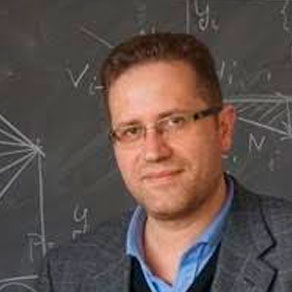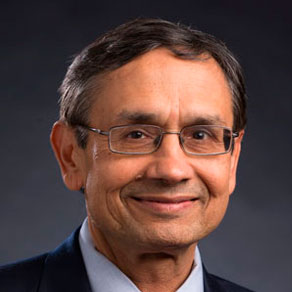
José M.F. Moura
[introductory/intermediate] Graph Signal Processing and Geometric Learning
Summary
The course focuses on analytics for signals and data supported by graphs, arising in applications from traditional physics-based signals like time series, images, or video to data on telecom networks, gene or chemical networks, social networks, corporate, financial, health care domains. The course introduces graphs, graph representations, and basic concepts of Network Science. Then it covers Graph Signal Processing (GSP) that extends traditional Digital Signal Processing (DSP) methods to data supported by graphs. The course builds GSP from first principles and presents recent foundational results from GSP as an intuitive, direct extension of DSP concepts. Finally, the course considers Geometric Learning combining GSP and Deep Learning (DL), in particular, graph neural networks (GNN).
Syllabus
- Basics of Network Science, including graph representations through adjacency and graph Laplacian matrices, graph random models, graph spectral analysis, and degree distributions.
- Basics of Graph Signal Processing including graph shift, graph shift invariance, graph signals, graph filtering, graph Fourier transform, graph convolution, graph frequency and graph spectral analysis of graph signals.
- Sampling of graph signals.
- Graph signal processing companion model.
- Interpolation, modulation and multiplexing of graph signals.
- Geometric Learning, including graph neural networks (GNN).
References
Notes will be provided.
Additional papers:
- Sandryhaila and Moura, Discrete Signal Processing on Graphs, IEEE Transactions on Signal Processing, April 2013.
- Sandryhaila and Moura, Discrete Signal Processing on Graphs: Frequency Analysis, IEEE Transactions on Signal Processing, April 2013.
- Sandryhaila and Moura, Big Data Analysis with Signal Processing on Graphs, IEEE Signal Processing Magazine, 2014.
- Shi and Moura, Graph Signal Processing: Dualizing GSP Sampling in the Vertex and Spectral Domains. IEEE Transactions on Signal Processing, 2022.
- Shi and Moura, GSP = DSP + Boundary Conditions — The Graph Signal Processing Companion Model, arXiv, 2023.
Pre-requisites
Prior exposure to Linear Algebra and/or Signal Processing is advisable.
Short bio
José M. F. Moura is the Philip L. and Marsha Dowd University Professor at Carnegie Mellon University, with interests in signal processing and data science. A detector in two of his patents with Alek Kavcic is found in over 60% of the disk drives of all computers sold worldwide in the last 15 years (4 billion and counting) –leading in 2016 to a US $750 Million settlement between Carnegie Mellon University and Marvell. He was the 2019 IEEE President and CeO. He was Editor in Chief for the IEEE Transactions on Signal Processing. He is Fellow of the IEEE, AAAS, and the US National Academy of Inventors, holds honorary doctorates from the University of Strathclyde and Universidade de Lisboa, is a member of the Academy of Sciences of Portugal, and a member of the US National Academy of Engineering. He received the Great Cross of the Order of The Infante D. Henrique, bestowed to him by the President of the Republic of Portugal. He is the recipient of the IEEE Kilby Signal Processing Medal.















